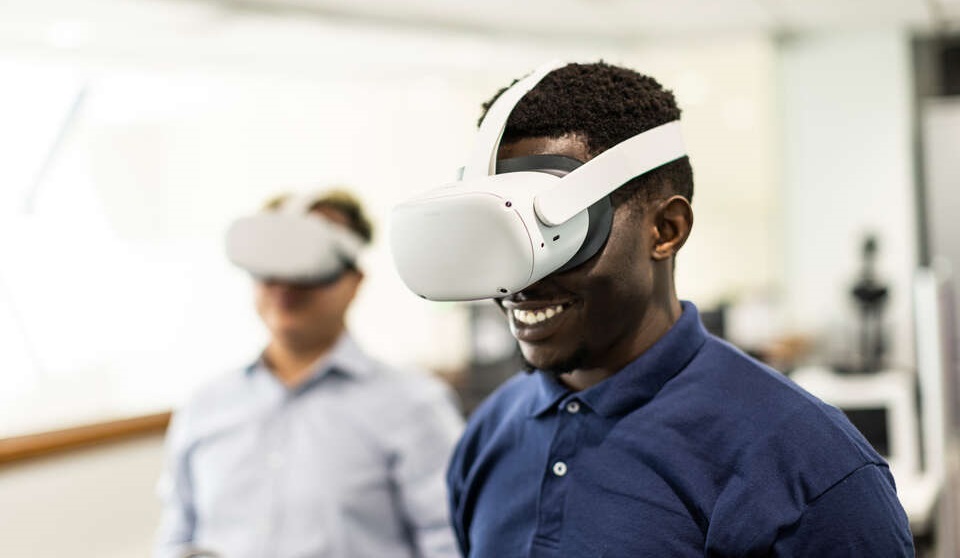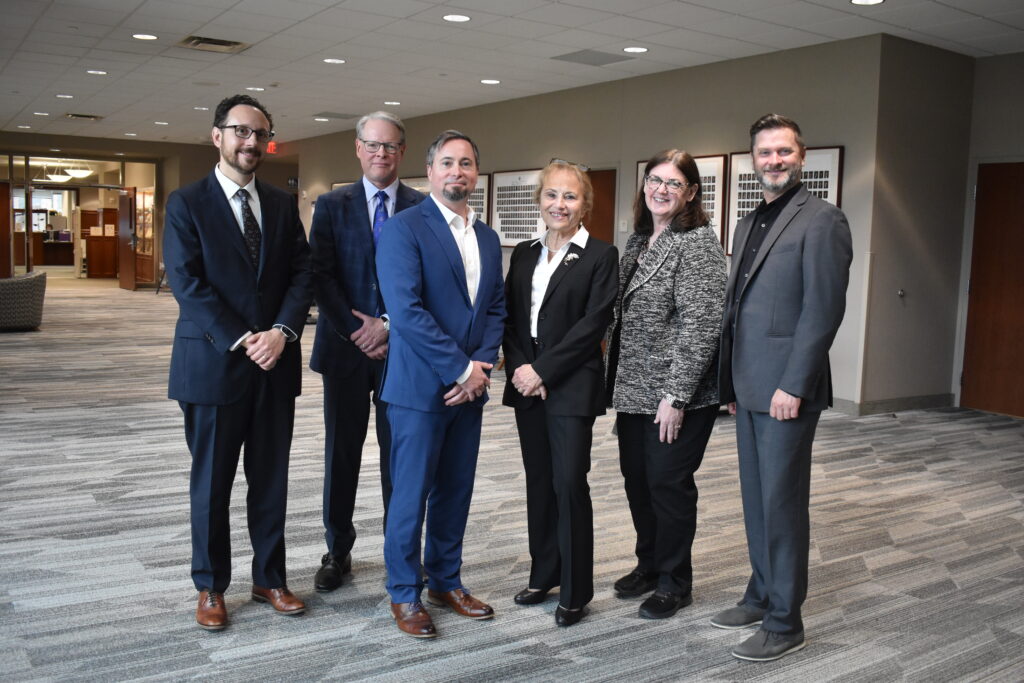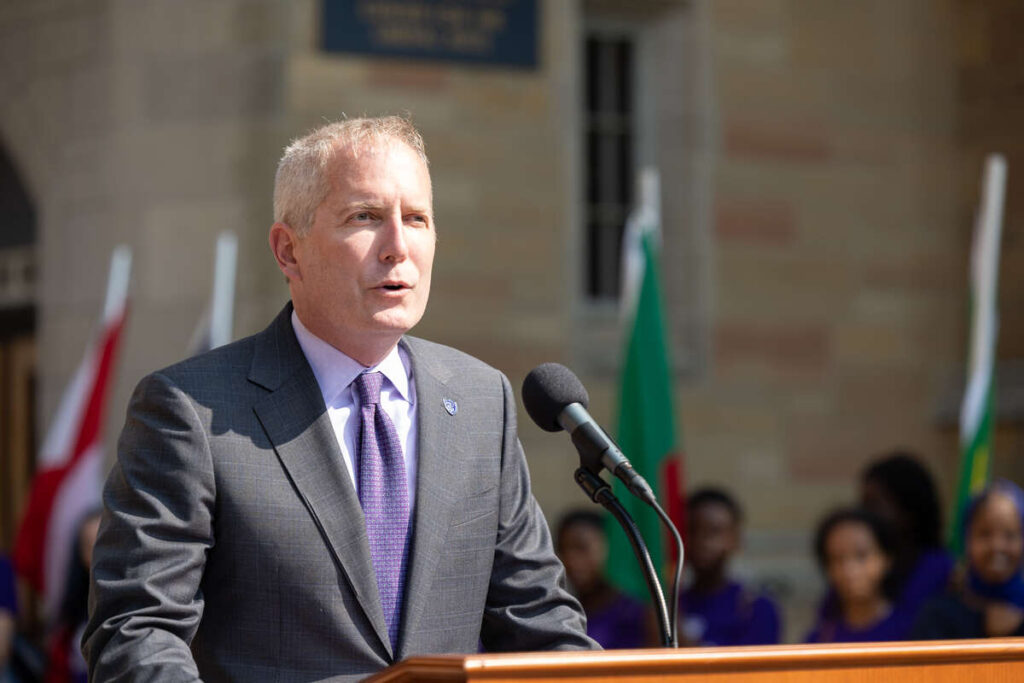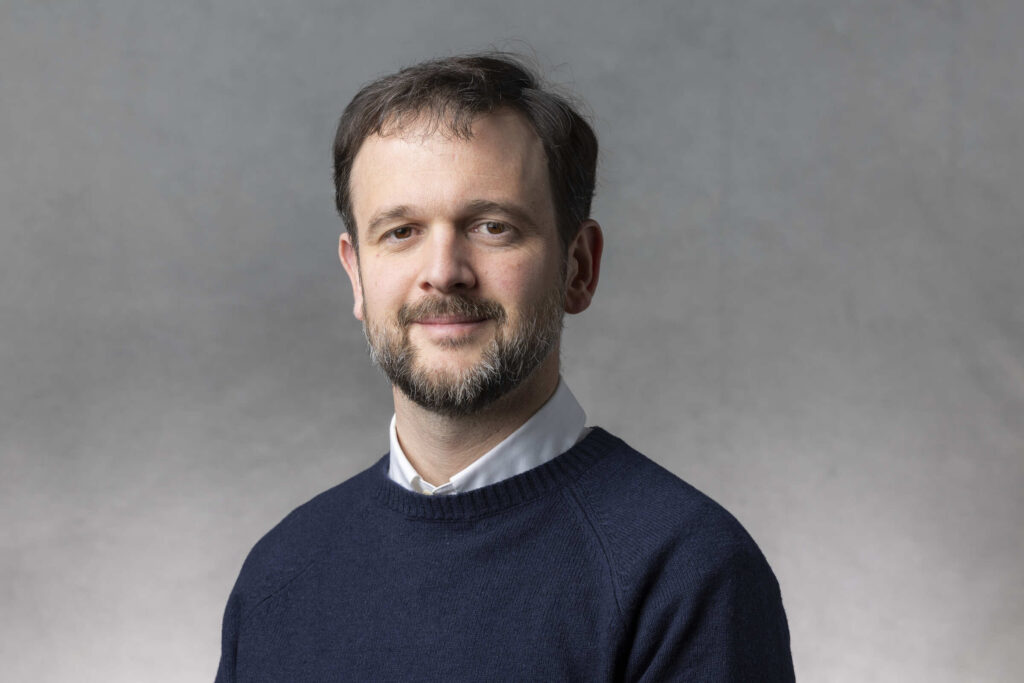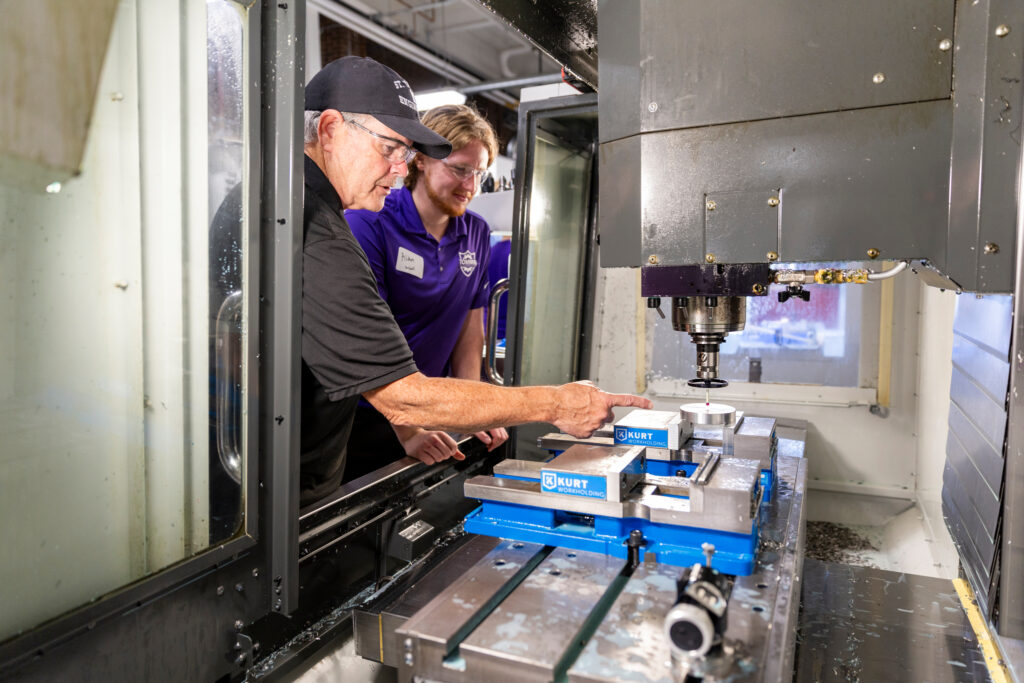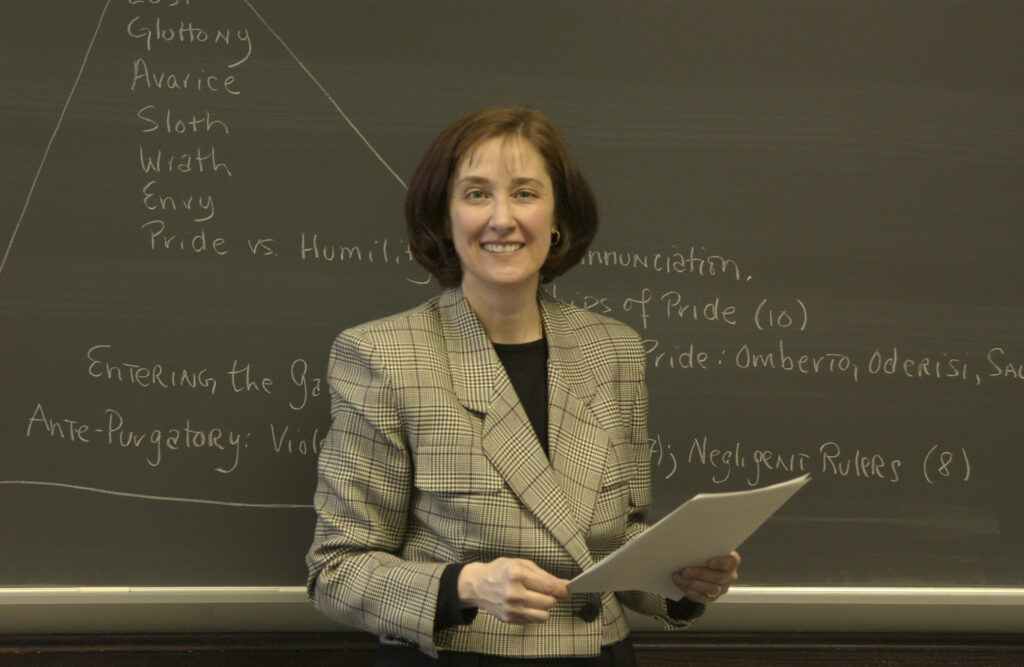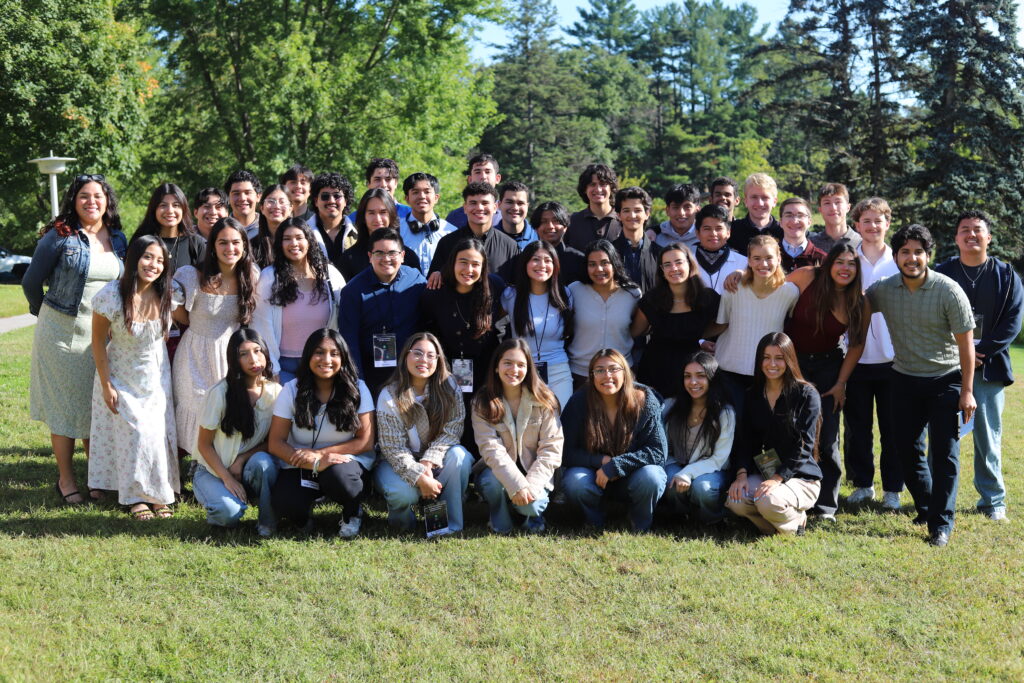On a spring evening at the University of St. Thomas, two dozen MBA students learned what the task ahead of them was: to give feedback on a project to Jeremy, a valued member of their team.
Spread across Schulze Hall on the Minneapolis campus, the students prepared for their turn to chat with Jeremy, who had displayed a range of noninclusive and poor management practices. But Jeremy isn’t anywhere to be found – at least not in the physical world. Instead, these MBA students are all chatting one on one with a digital avatar, through the magic of virtual reality and artificial intelligence.
Tommies across various schools have donned VR headsets this spring, wheeled directly into their classrooms by the technology expects at STELAR, the St. Thomas E-Learning and Research (STELAR) center.
“With virtual reality, you feel like you’re actually there,” Sambhav Lamichhane ’26 said, STELAR’s XR lab manager. “It’s hard to describe without actually trying it yourself, but it’s like an out-of-body experience.”
STELAR has been building up its VR infrastructure and expertise for years, but this winter the department got a significant boost – the university was selected to take part in an immersive learning pilot program from two titans in the growing VR world, Meta and Bodyswaps. Meta provided additional headsets while Bodyswaps gave St. Thomas access to its catalog of virtual learning modules.
Designed to immerse students in situations that are often difficult to recreate in the classroom setting, Bodyswaps modules focus on delivering soft skills training, simulating everything from job interviews to dealing with angry customers.
Lisa Burke, director of STELAR, has helped St. Thomas classes access modules on diversity, public speaking and leadership.
“This has the potential to really accelerate student learning, to help students gain confidence in skills that are difficult to practice in real life,” Burke said. “Gaining that experience and that confidence makes it so much easier when students encounter the same situation again in the real world with real people.”

Back in Schulze Hall, MBA students were finding their feedback session with avatar Jeremy to be more realistic than they could have imagined. With the help of AI, each conversation changes based on the choices made by students, whether that’s what they say, how they say it, or even their body language.
“Your brain thinks it went through this experience in real life,” Burke said. “Even though it’s in a virtual setting, the feelings are real.”
At the end of each module, the AI comes into play again, offering feedback based on user performance. For these MBA students, some were told that they spoke too softly, avoided eye contact, or were too judgmental in their mission to offer evidence-based feedback.
“The biggest benefit we're going to get from AI in education … is personalized learning,” Jonathan Keiser said, associate vice president of academic technology and innovation. “That advancement allows the AI to meet the student wherever they're at and give them constructive feedback.”

Throughout the pilot program, STELAR has worked to bring Bodyswaps all over campus. Scholars at Dougherty Family College have used the VR headsets to prepare for a series of summer internship interviews. At the Susan S. Morrison School of Nursing, students practiced difficult conversations with patients.
STELAR leaders believe they’re close to unlocking the true potential of using VR on campus, but they’re quick to point out it must come with direction and purpose.
“The technology around VR, AR and AI has blossomed. We’re not getting it back in the acorn,” Keiser said. “So what can we do with it? ... We must design new technology and emerging technology systems with the student in mind.”
Planning for future student-centered VR experiences is well underway. STELAR is exploring possible virtual labs to support the new STEM concentration at DFC, while business students might get the chance to open their own virtual coffee shop. STELAR is also working directly with the team at Bodyswaps to make suggestions and develop new modules with the University of St. Thomas in mind.
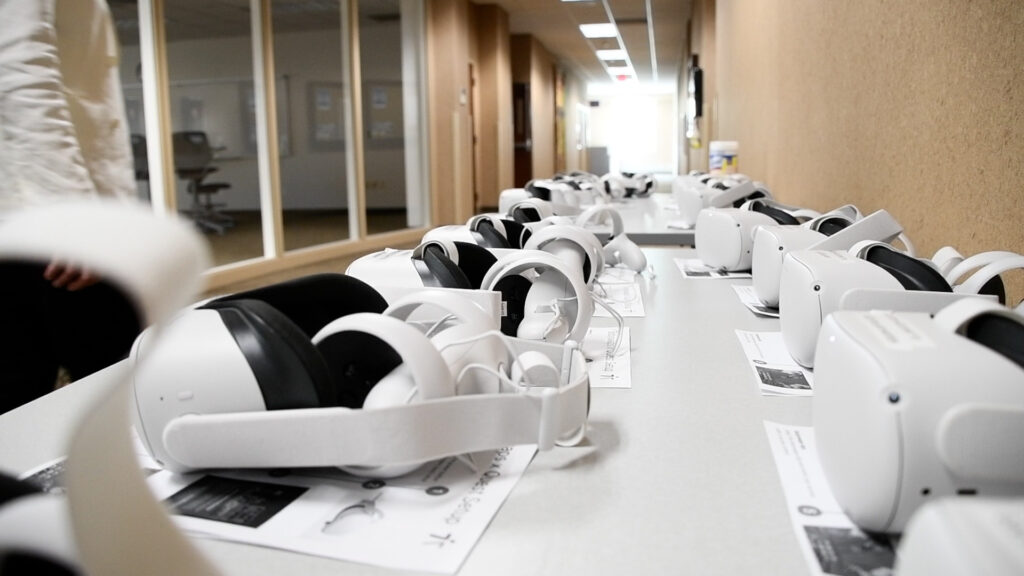
Eric Tornoe, STELAR’s associate director of research and high-performance computing, cautions that technology development takes time, but these first pilot programs show great promise.
“Right now, it's really experimental – prototypes are everywhere,” Tornoe said. “But it’s also exciting to have that ability to be somewhere you’re not, and especially for you to be someplace that you might not be able to be.”
With each new virtual experience, STELAR knows they’re developing a new kind of modern classroom, positioning the university as a leader in VR for years to come.
“The potential is really unimaginable until you've experienced it,” Tornoe said. “When people put on the headset, even if they don't like it, their reaction is usually, ‘Whoa, I was somewhere else for a while.’”
